A floating mouse cage is an important part of every Mobile HomeCage system. The cage must be very light: if the mouse strains to move it, the illusion of effortless self-governed locomotion is gone. Besides that: the cage’s bottom must be very rigid to ensure even flotation. For both of these reasons, we make most of our cages from carbon fiber, which is both light and durable. We include one cage with every Mobile HomeCage system, but the cage’s diameter and wall height must be specified in the order.

Floating mouse cages for the standard size Mobile HomeCage
The diameter of all small mouse cages is 180 mm, but there are several wall height options:
- 70 mm wall cages are optimal for imaging: the high wall shields the mouse from the environment and helps to reduce the stress;
- 40 mm wall cages are a default option for electrophysiological recordings: they provide better access with micromanipulators (from a shallow angle);
- 20 mm wall cages are optimal for visual stimumation from outside the cage and for video recording the mouse from the side, for example for pupil dilation measurements. We also recommend this cage for patch-clamp recordings since the clamp does not touch the cage wall. However, mice feel more exposed in extra low-wall cages; some may require additional training;
- transparent cage (70 mm or 40 mm plastic wall) allows providing visual stimuli or video recording the mouse from the side (e.g. for gait research).
The wall height has important implications for managing stress. Whenever possible, we recommend using the high wall (70 mm), which shields the mouse from the external lights and noises and comes closest to recreating a “natural” environment of a standard laboratory homecage. To further enhance the perception of safety, add familiar toys or light bedding, for example, wood shavings to the carbon fiber cage.
We use the tracking mats for locomotion tracking in the standard size Mobile HomeCage. Each mat has two magnets. The mats are inserted into the cage with the magnets facing down: remember to place the magnet with the red dot next to the cage’s door.
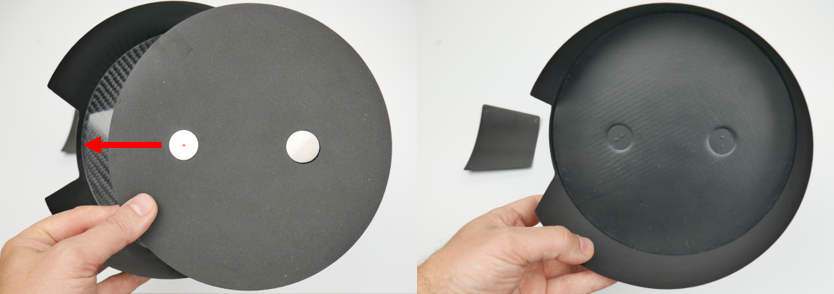
Let us know if you are planning to use the transparent cage for tracking: we can build the magnets directly into the cage’s bottom. The transparent cage is hand-made, which makes customization easier.
The door has small magnets that keep it in place. To prevent the mouse from pushing out the door during training or experiment, remember to close the door from inside the cage:

Cages for the Mobile HomeCage Large
There is more to large cages than meets the eye. The cages have a sandwich bottom which consists of a layer of foam squeezed between two layers of carbon fiber film. The cages that are used for locomotion tracking also have magnets built into the bottom. Unfortunately, it is not possible to manufacture large carbon fiber cages in the mold. Each cage is hand-made, which means that it is easier to customize but more difficult to manufacture at a low cost. These are the most common sizes:
- diameter: 325 mm; wall height 70 mm (see below, right)
- diameter: 325 mm; wall height 40 mm (see below, center)
- diameter: 325 mm; wall height 20 mm (see below, left)
- diameter: 290 mm; wall height 70 mm
- diameter: 290 mm; wall height 40 mm
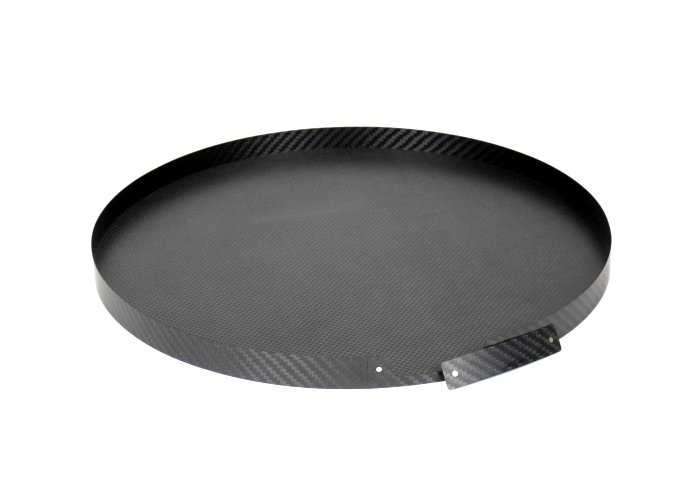
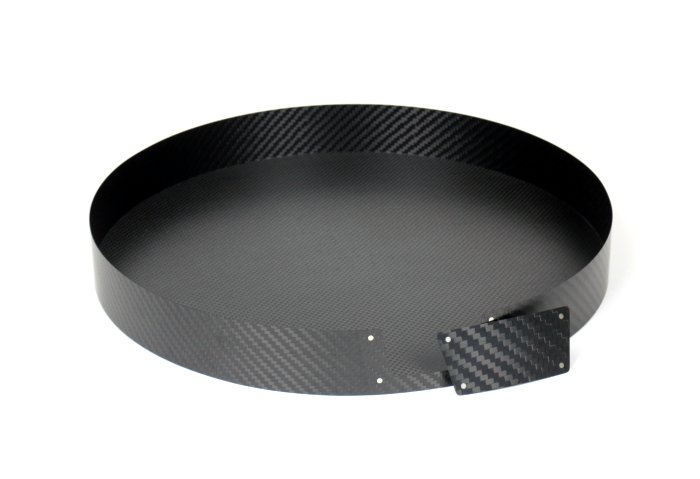
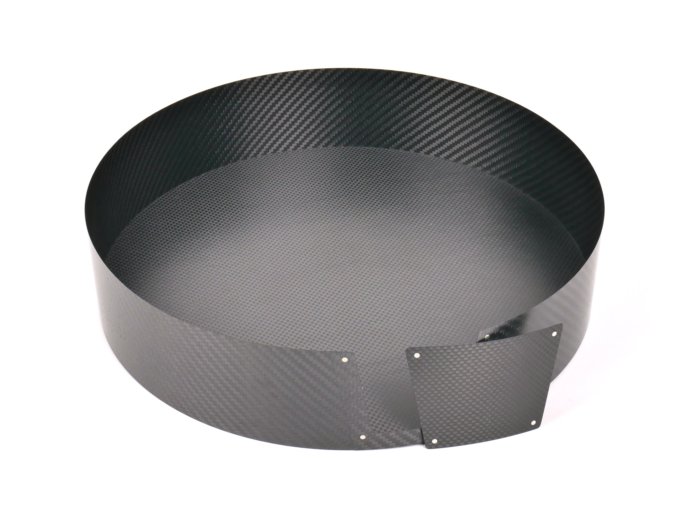
The wall height has important implications for managing stress. Whenever possible, we recommend using the high wall (70 mm), which shields the mouse from the external lights and noises and comes closest to recreating a “natural” environment of a standard laboratory homecage. To further enhance the perception of safety, add familiar toys or light bedding, for example, wood shavings to the carbon fiber cage.
We can make any large mouse cage with transparent walls at no extra cost. The largest diameter cages (325 mm) are the best choice for behavioral monitoring. Unfortunately, even some large frame two-photon microscopes don’t provide the needed space for this cage’s flotation. This is the reason why we offer smaller diameter cages as well. Read our guide to compatibility to learn more about horizontal space requirements for optimal cage flotation.
No tracking mats are required for the large cages: we build the magnets directly into the cage’s bottom. The magnets are not visible: do not place the cage on metal surfaces. The magnets will attach to a magnetic surface, and dis-attaching them may damage the cage.
Foam cages and mazes for the Mobile HomeCage Large
Finally, we also make mouse cages and mazes from foam and plastic. Do not use these cages and mazes between different mice, because it is not possible to disinfect the foam base. However, it is possible to use the same cage multiple times for the same mouse. Besides that, we sell the foam cages and mazes in sets of fifteen at consumables’ prices.
Making the cages out of foam and plastic allows implementing a greater variety of designs. Currently, we offer these options:
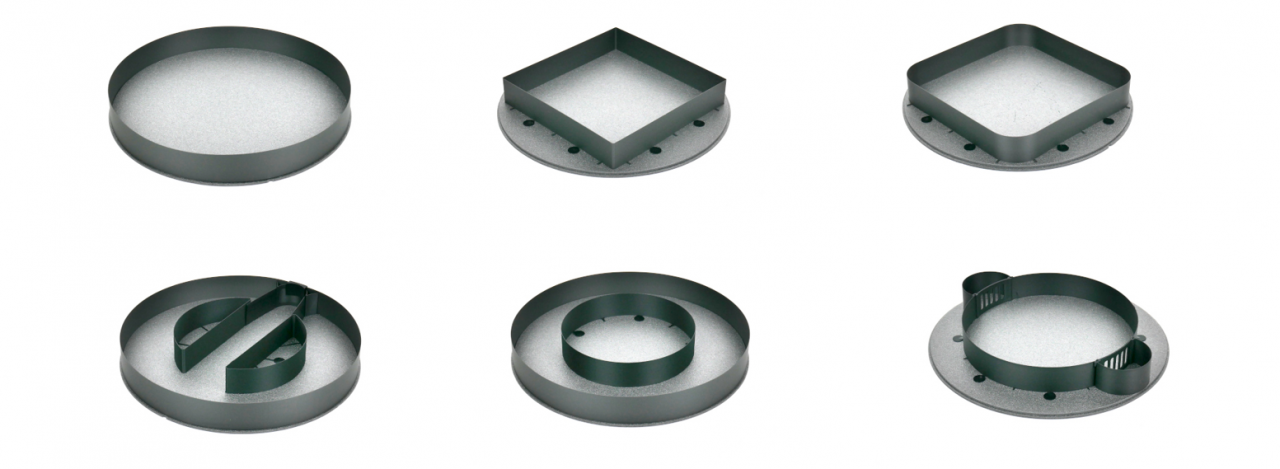
- round cage (top row, left);
- square cage with straight corners (top row, center);
- square cage with rounded corners (top row, right);
- T-maze (bottom row, left);
- donut maze or circular track (bottom row, center);
- sociability cage (bottom row, right).
All foam cages and mazes have 40 mm walls.
Cleaning and storing the floating mouse cages
Carbon fiber cages
Clean the cage with a soft cloth soaked in water and mild detergent. Alternatively, use a 70% ethanol solution. Other disinfectants have strong lasting smells that repel mice.
Do not machine-wash or autoclave, do not use abrasive washing materials.
While using large carbon fiber cages, do not leave any liquid in the cage for a long time. The liquids may penetrate through the carbon fibers and damage the foam layer of the cage’s bottom.
Carbon fiber cages are sensitive to extreme heat. Storing temperature must not exceed 40 degrees Celsius (roughly 100 degrees Fahrenheit). Magnets built into the bottom for locomotion tracking may de-magnetize at high temperatures.
Foam cages and mazes
To prolong the use, wipe out the liquids with paper towels. Use damp paper towels for cleaning the base. The plastic walls can be washed and disinfected – remember to disassemble them before cleaning.
We recommend using each foam cage or maze for only one mouse. Label the cages or mazes for repeated use.